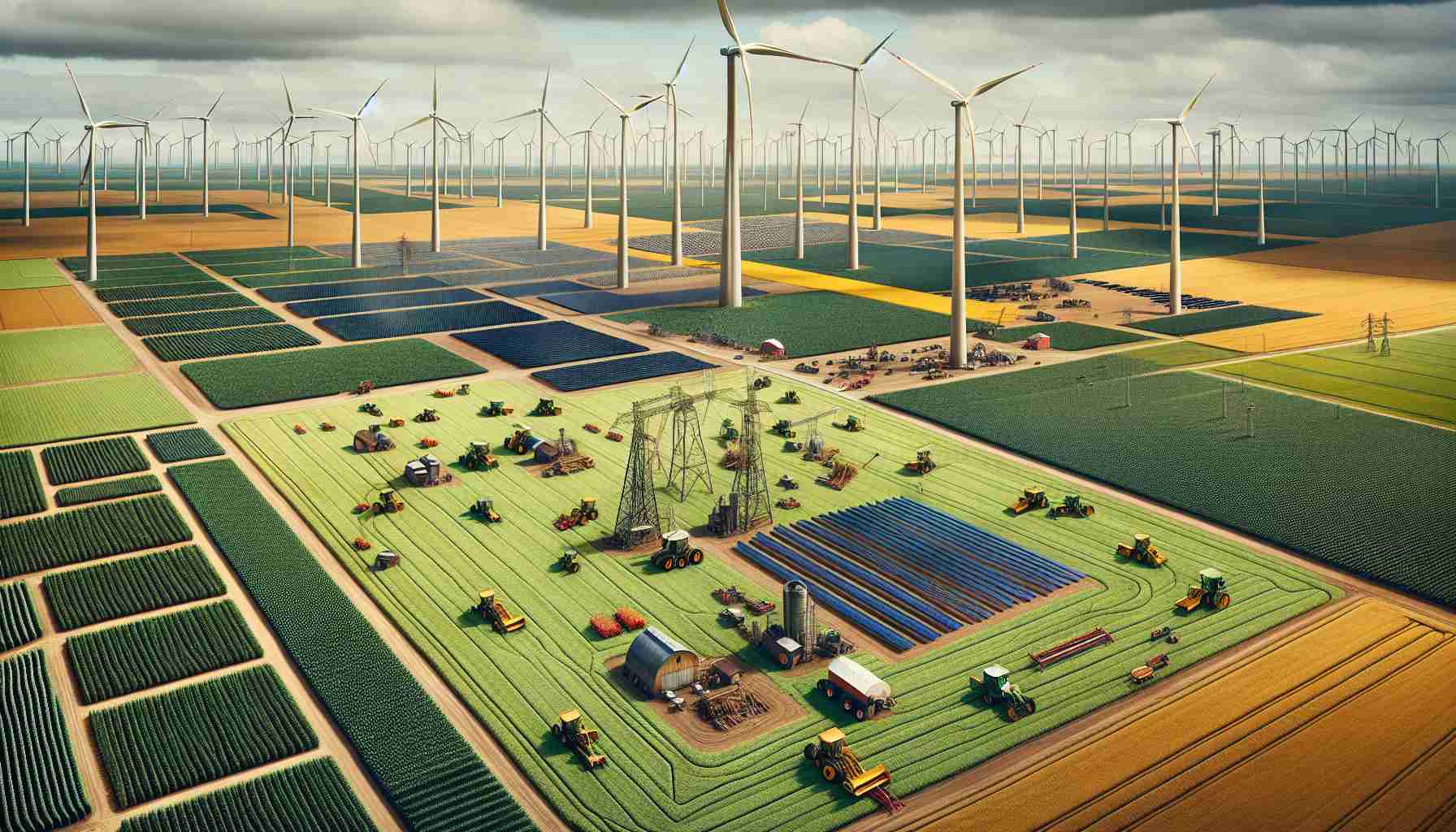
Farming vs. Renewable Energy: The Ongoing Battle
At the annual convention of the American Farm Bureau in San Antonio, a significant concern arose regarding the encroachment of green energy projects on vital farmland. Members expressed anxiety that renewable energy initiatives are consuming land essential for food production.
The president of the Ohio Farm Bureau, Bill Patterson, highlighted the critical need to establish a balance between fulfilling the country’s energy demands and preserving agricultural land for food provisions. He emphasized that the current approach lacks a proper framework to value farmland when it comes to subsidizing solar projects, indicating that adjustments must be made to coexist peacefully with renewable energy developments.
Patterson also pointed out that the issue extends beyond solar energy. Wind energy, particularly in regions like northwest Ohio, is contributing to the challenges faced by farmers. There is a pressing need to address the repercussions of urban expansion that further diminishes agricultural space.
As discussions continue, the Farm Bureau aims to find solutions that will allow for both energy development and the safeguarding of essential farmland. The goal is to create a sustainable model that not only supports green energy but also upholds the integrity of American agriculture, ensuring that future generations can meet both energy and food production needs without compromise.
The Dual Imperative: Balancing Energy Needs and Agricultural Stability
The discourse surrounding farming and renewable energy encapsulates a broader conversation about our societal structure and economic future. As urban areas expand and green energy ventures proliferate, the encroachment on arable land signals an urgent need to reevaluate our priorities. The shifting landscape of energy production and agriculture poses a dilemma: how do we ensure food security while transitioning to sustainable energy sources?
As we navigate this complex terrain, the global economy feels the tremors. Agricultural productivity is crucial not only for local markets but also for international trade. Countries relying on American exports could face food shortages if farmland continues to be sacrificed for energy projects. This dilemma raises critical questions about long-term economic stability and the equitable distribution of resources across nations.
Moreover, the environmental impact cannot be overstated. Clearing land for renewable energy infrastructure may degrade ecosystems, affect biodiversity, and alter local climates. As farmers face increased pressure from both energy companies and urban sprawl, the potential for soil depletion and water scarcity becomes a pressing concern.
Looking ahead, emerging technologies such as agrovoltaics—where solar panels are installed on farmland—might provide a blueprint for sustainable coexistence. By fostering innovative solutions, we could achieve a harmonized model that respects both our energy and food production needs, ensuring a resilient future for society and the planet at large.
The Clash Between Farming and Renewable Energy: Finding Common Ground
Understanding the Tension Between Agriculture and Renewable Energy Development
The ongoing debate between farming and renewable energy projects has reached a critical juncture, especially as the demand for both food and clean energy continues to grow. This tension was notably highlighted at the recent American Farm Bureau convention in San Antonio, where farmers expressed concerns about the impact of green energy initiatives on vital agricultural lands.
Balancing Energy Needs and Agricultural Integrity
Bill Patterson, the president of the Ohio Farm Bureau, articulated the core of this conflict: the necessity to find a balance between the country’s energy needs and the preservation of farmland essential for food production. The current framework surrounding subsidies for solar projects tends to undervalue agricultural land, leading to a call for adjustments that would allow both sectors to thrive without encroaching upon each other.
The Broader Impact of Renewable Energy Projects
While solar energy garners much discussion, wind energy is also affecting farmers, particularly in regions such as northwest Ohio. The expansion of wind farms often leads to the loss of arable land, complicating the already delicate relationship between energy development and farming.
Key Considerations for Coexistence
1. Land Use Regulations: Developing clear guidelines for land use that protects farmland while allowing for renewable energy projects is crucial. Potential zoning laws could be modified to create designated areas for energy development that do not encroach on productive farmland.
2. Innovative Farming Practices: Farmers are increasingly exploring agrovoltaics, a dual-use farming approach that incorporates solar panels on agricultural land. This can enhance land productivity while generating renewable energy.
3. Community Engagement: Involving local communities in discussions about renewable energy projects can lead to more sustainable outcomes and greater acceptance among farmers. Understanding local agricultural needs can guide how energy projects are implemented.
Pros and Cons of Renewable Energy Development on Farmland
Pros:
– Sustainable Energy Production: Renewable energy sources reduce reliance on fossil fuels, contributing to sustainability.
– Economic Opportunities: Green energy projects can provide new revenue streams for farmers through land leases.
Cons:
– Loss of Agricultural Land: The construction of energy projects may reduce the available land for food production.
– Disruption of Farming Operations: Heavy machinery and infrastructure can disrupt local farming operations and wildlife habitats.
Future Trends and Predictions
As both sectors contend with climate change and urbanization, the future will likely see a growing emphasis on integrative land use strategies. Policymakers and stakeholders are expected to push for innovative models that allow for the development of renewable energy while keeping agricultural land productive.
Moreover, advancements in technology and design may facilitate land-sharing solutions, enabling farmers to harness renewable energy alongside traditional agricultural practices. This commitment to sustainability could pave the way for a more cooperative relationship between the farming and renewable energy sectors.
Conclusion: A Path Towards Collaboration
To create a sustainable future, discussions and efforts surrounding the intersection of farming and renewable energy must continue. A collaborative approach that respects both energy needs and agricultural integrity is essential for ensuring that future generations can thrive in a world where food and energy coexist harmoniously. As the landscape of energy production evolves, embracing innovative solutions will be key to preserving the backbone of American agriculture.
For more insights on sustainable practices and energy solutions, visit the American Farm Bureau.



